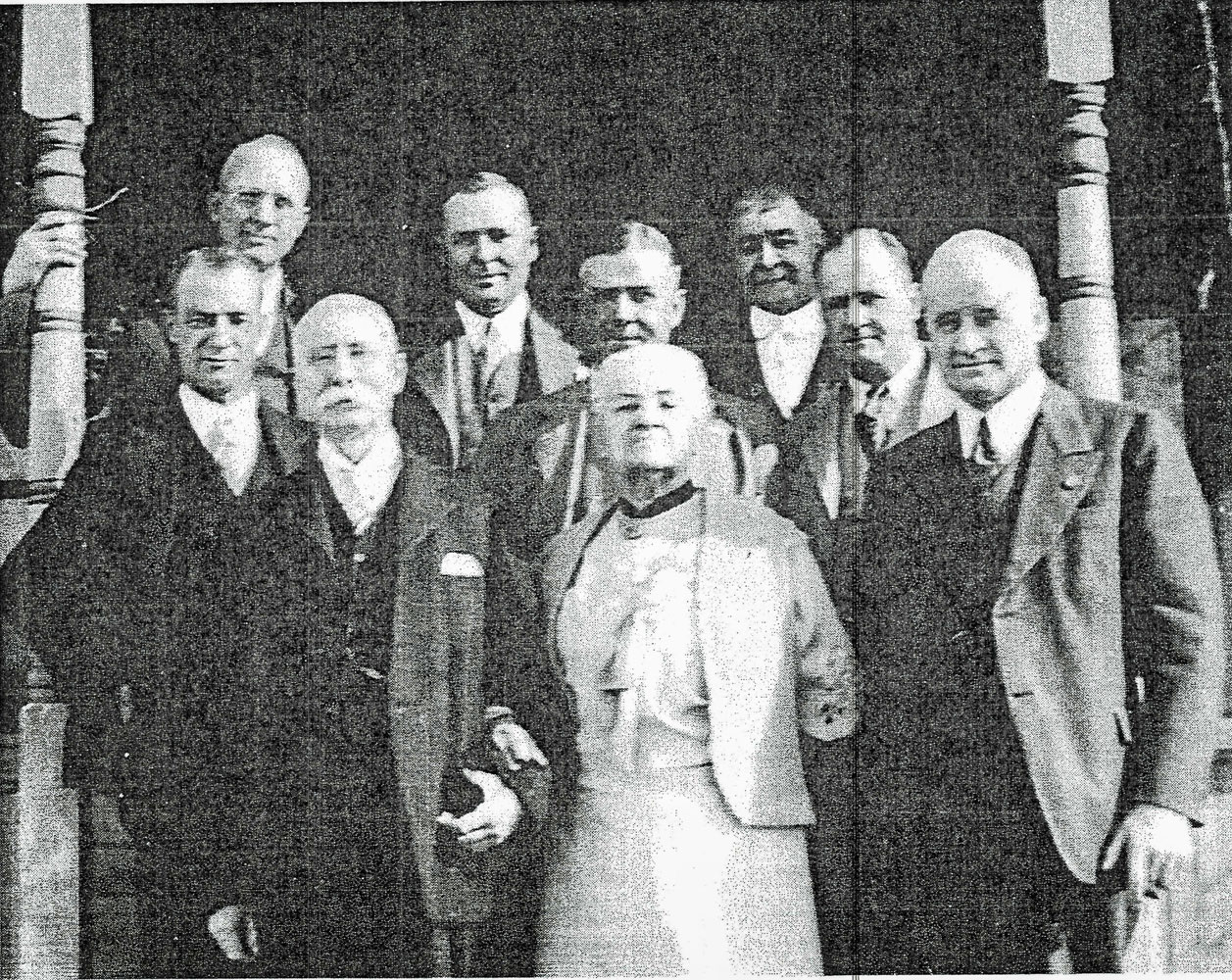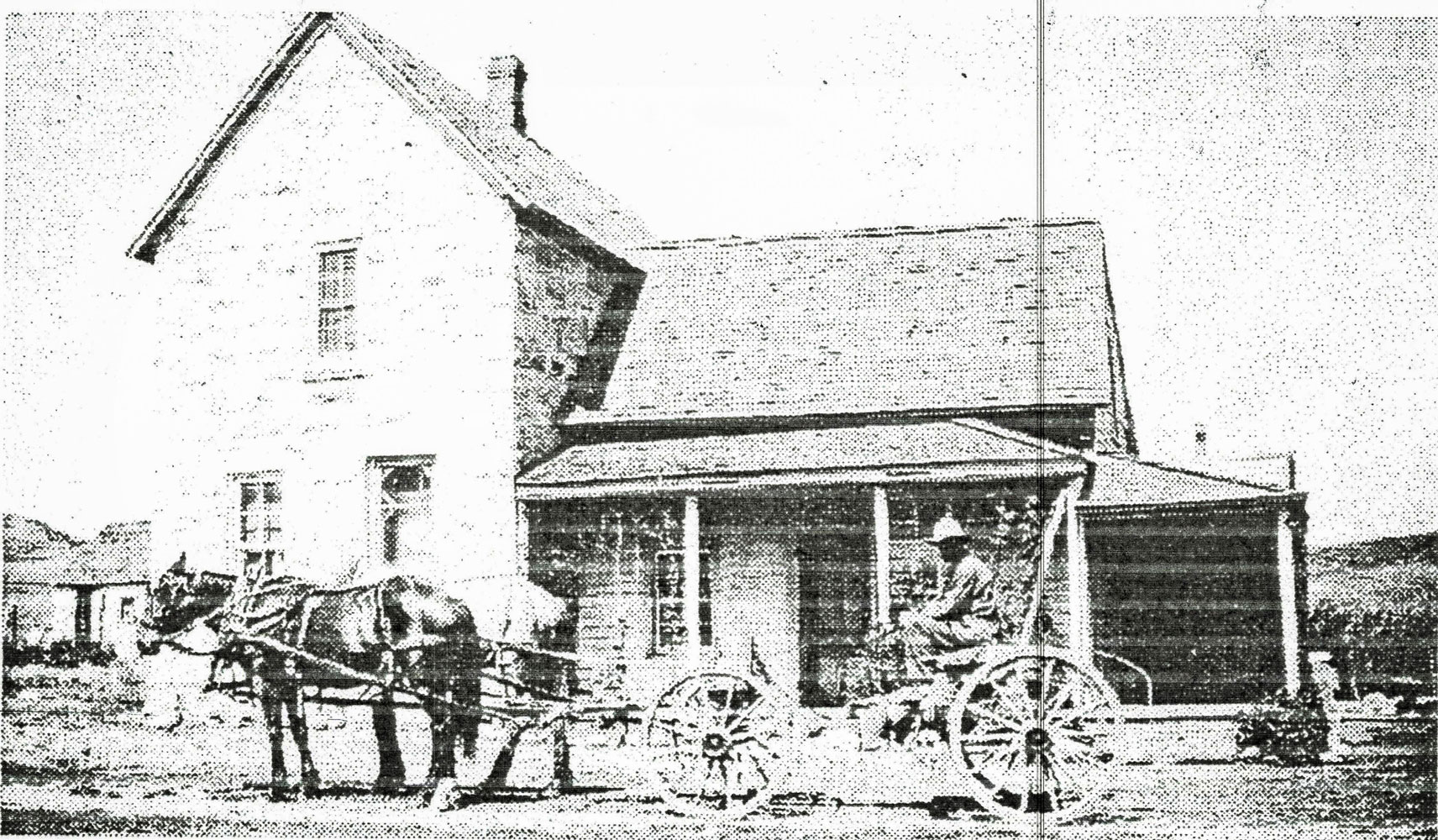Twin Creek and two buttes


A family picture features George P. and Millie Stewart and seven sons, a product of their blended family. George P. and Millie are pictured at the left front.
Born in 1863 of Scotch lineage, George Patrick Stewart hailed from Murchison, Victoria, in Australia’s gold belt. After his storekeeper/postmaster father died when George was 7 years old, his uncle Izett Stewart transported him to the Isle of Jersey in England to live with his Aunt Helen. Nine years later, at 16, George rejoined Uncle Izett stateside, who was by then a master surveyor thriving in our Sedalia area. George gained valuable hands-on training with real estate issues and appreciating values at an early age. As it turned out, he would later acquire the two most prominent buttes in town: the Santa Fe Quarry and the iconic Castle Rock itself.
At 19, he married Sedalia widow Amelia (Millie) Curtis McInroy. Astonishingly, she was eight years his senior, already with five children. It didn’t matter; in fact, it is said that George worshiped Millie. By 1883, he had homesteaded 1,700 acres behind today’s The Meadows subdivision and there built a large rhyolite home he called Twin Creek Ranch.
Deeply concerned about the education of his new family, George built his clan a “back-up” rhyolite home in Castle Rock at 422 Front Street. The family called it “Maples.” Since the journey over today’s Wolfensberger Hill to the Cantril School could be treacherous in the winter, the Front Street home was an ideal location for the school year.
At the same time as he planned for the Front Street home, George purchased the Castle Rock and the surrounding area. It is said that one of his greatest life’s pleasures was viewing Castle Rock from the dining room window, appreciating how the natural light flattered it with many different colors and visual perspectives.
As life evolved, George’s skills at land speculation grew; one might even say they became legendary. By 1901, he had also bought the Santa Fe Quarry, likely recognizing the still significant role that rhyolite buildings would play in the expansion of the West. An equally shrewd judge of character, he retained Castle Rock’s “Paul Bunyan,” Gus Nelson, as his quarry manager and driving supervisory force.
Santa Fe rhyolite rose to great prominence in the area as some of the edifices built of it were Denver’s Old City Hall, the Windsor Hotel, Trinity Methodist Church, Arapahoe County Courthouse, Tabor Grand Opera House and the Charles Boettcher residence.
George actively served the public in later years taking positions as Douglas County’s Surveyor and County Treasurer. That exposure gave him an opportunity to become a founder and part owner of the Bank of Douglas County.
Despite the age difference, both he and Millie died within a year of each other in 1942 and 1943, respectively. Five years later, when the Stewart estate was settled, their sons honored their parents by selling Castle Rock and the 20 surrounding acres to the Town of Castle Rock for a most reasonable sum: $200.

Stewart Home, circa 1883. The home, which later burned down, was located at the southeast corner of Coachline Road and The Meadows Parkway.
By Joe Gschwendtner; photos courtesy Amy Stewart Higginson and Dorothy and Howard Hyden